Beef Vs Pork Ribs: Deciding The Meaty Battle
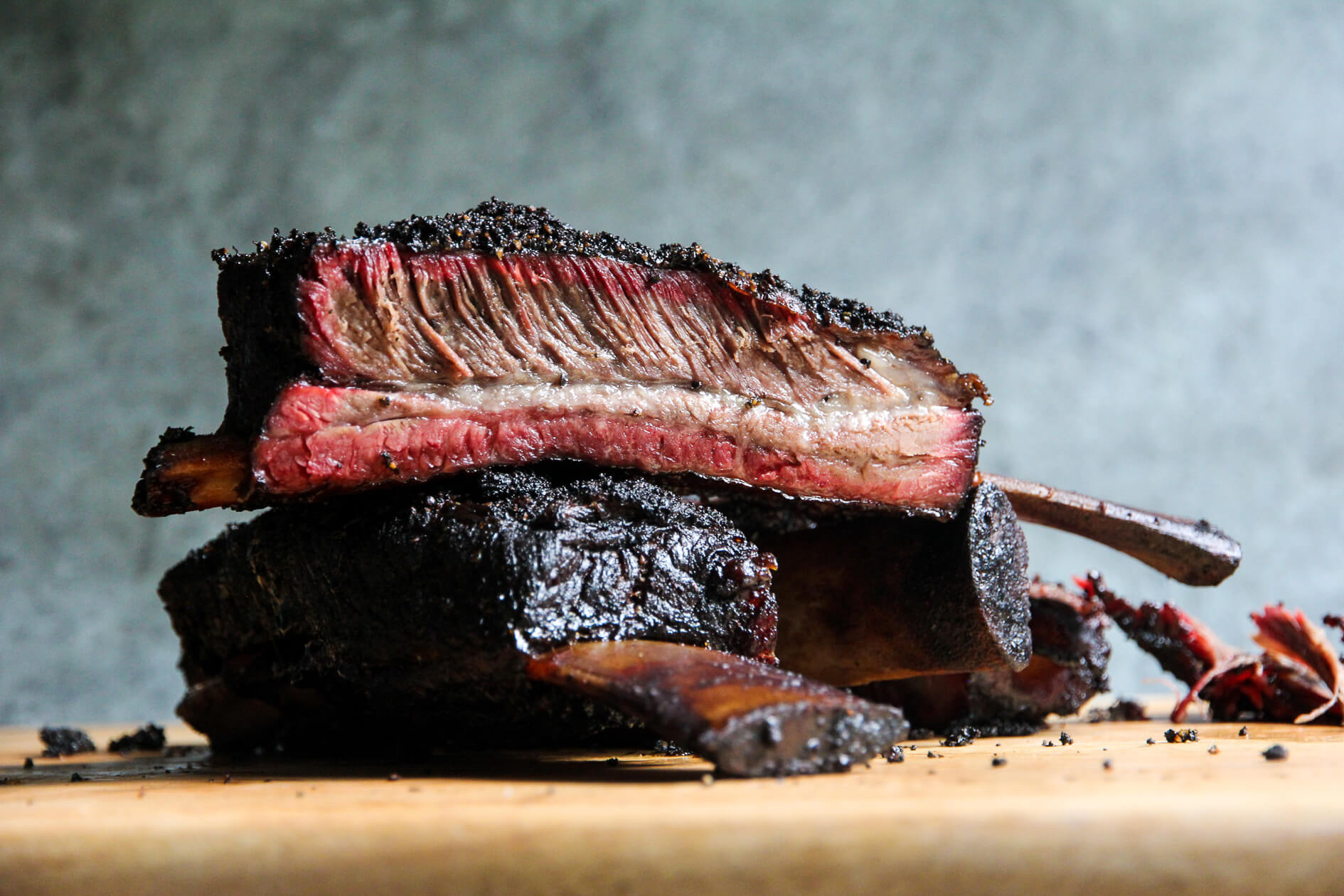
In the battle of beef vs pork ribs, it ultimately comes down to personal preference. Beef ribs offer a thick and meaty texture, perfect for those who enjoy a hearty bite. On the other hand, pork ribs are known for their tender and juicy meat that falls off the bone. When deciding between the two, consider factors such as nutritional value, flavor profile, cooking methods, texture, cost, availability, and health considerations. Experiment with different sauces, seasonings, and serving suggestions to find the perfect match for your taste buds.
Nutritional Value And Flavor Profile
When comparing the nutritional value and flavor profile of beef and pork ribs, there are some notable differences. Beef ribs tend to have a higher fat content, which results in a richer and more intense flavor. They are also a good source of protein, iron, and B vitamins. On the other hand, pork ribs are leaner and slightly sweeter in taste. They are a good source of protein and contain essential nutrients like zinc and selenium. It’s important to note that the exact nutritional content may vary depending on the cut and cooking method.
Beef Ribs Nutritional Content And Flavor
Beef ribs are known for their rich and intense flavor, making them a popular choice among meat lovers. In terms of nutritional content, beef ribs tend to have a higher fat content compared to pork ribs. This higher fat content not only contributes to the rich flavor but also provides a good source of energy. Additionally, beef ribs are a great source of protein, iron, and B vitamins, making them a nutritious choice for those looking to incorporate more nutrients into their diet.
Pork Ribs Nutritional Content And Flavor

Pork ribs have a slightly sweeter and milder flavor compared to beef ribs. In terms of nutritional content, they tend to have a slightly lower fat content and fewer calories than beef ribs. However, pork ribs are still a good source of protein and contain essential nutrients such as iron, zinc, and B vitamins. The flavor of pork ribs can vary depending on the cooking method and seasoning used, making them a versatile and delicious option for barbecue enthusiasts.
Source: mauraskitchenofmillbrook.com (Pork Ribs Nutritional Content and Flavor section)
Cooking Methods And Texture
Cooking methods play a crucial role in determining the texture and tenderness of beef and pork ribs. Beef ribs are best cooked using slow methods such as smoking, braising, or roasting. The low and slow cooking allows the connective tissues to break down, resulting in tender and melt-in-your-mouth meat. On the other hand, pork ribs can be cooked using various methods like grilling, baking, or slow cooking. Regardless of the method, pork ribs tend to have a more tender and juicy texture compared to beef ribs.
Best Cooking Methods For Beef Ribs
Slow cooking methods such as smoking, braising, and roasting are the best techniques for cooking beef ribs. These methods allow for the low and slow cooking that is necessary to break down the connective tissues in the meat, resulting in tender and melt-in-your-mouth ribs. Smoking the ribs over indirect heat for several hours infuses them with smoky flavors and gives them a delectable crust. Braising the ribs in a flavorful liquid, such as beef broth or barbecue sauce, tenderizes the meat and enhances its taste. Roasting the ribs in the oven at a low temperature helps to retain their moisture and produces a succulent, tender texture.
Texture And Tenderness Of Pork Ribs
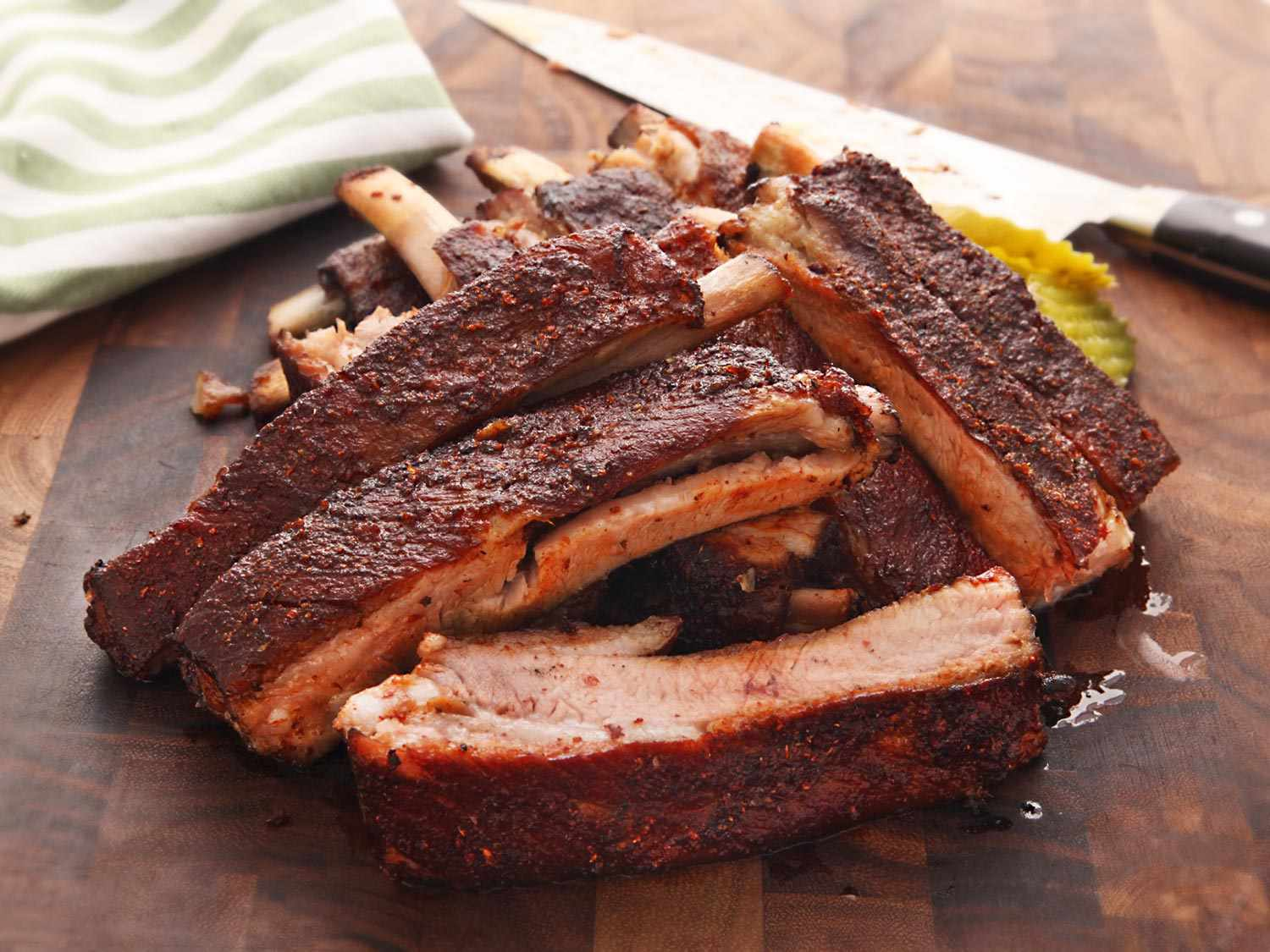
Pork ribs are known for their tender and juicy texture. The meat is succulent and easily pulls away from the bone, creating a melt-in-your-mouth experience. The high fat content in pork ribs contributes to their rich and moist texture. The connective tissues in the meat break down during cooking, resulting in a tender and fall-off-the-bone texture. Whether they are smoked, grilled, or braised, pork ribs retain their tenderness and create a satisfying eating experience. Their texture makes them an excellent choice for those who prefer a more delicate and tender rib.
Cost And Availability
When it comes to cost and availability, there are some notable differences between beef and pork ribs. Generally, pork ribs tend to be more affordable and widely available compared to beef ribs. This is primarily due to the fact that pork is more commonly consumed and produced. Pork ribs can be found in most grocery stores and butcher shops, making them convenient to purchase. On the other hand, beef ribs may be slightly pricier and may require a visit to a specialty butcher or a barbecue-specific shop. So, if budget and accessibility are important factors for you, pork ribs may be the more practical choice.
Pricing Comparison Between Beef And Pork Ribs
When it comes to pricing, pork ribs tend to be more affordable compared to beef ribs. This is due to the fact that pork is more commonly consumed and produced, making it more accessible and less expensive. Pork ribs can be found in most grocery stores and butcher shops at a reasonable price. On the other hand, beef ribs may be slightly pricier and may require a visit to a specialty butcher or a barbecue-specific shop. So, if budget is a consideration, pork ribs are usually the more economical option.
Availability Of Beef And Pork Ribs In Markets
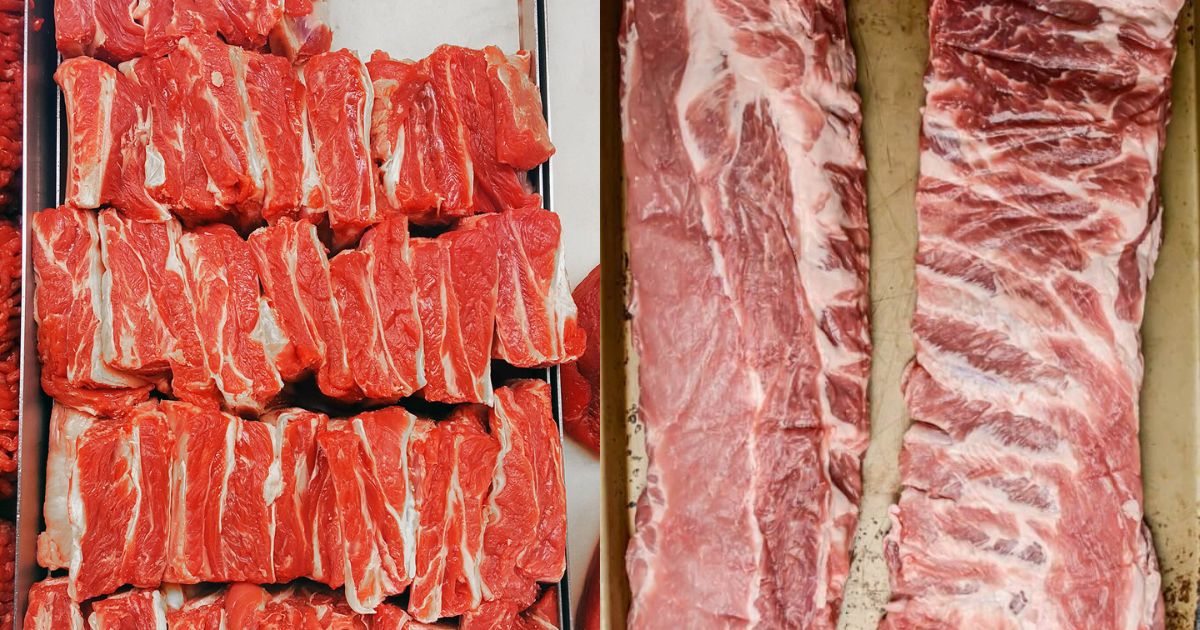
Beef and pork ribs are widely available in most grocery stores and butcher shops. However, the availability may vary depending on the location and demand. Pork ribs, being more popular and commonly consumed, can be found in a wider range of stores. On the other hand, beef ribs may require a visit to a specialty butcher or a barbecue-specific shop. It is advisable to check with local suppliers or inquire at the meat department of your preferred store to ensure availability before planning your BBQ feast.
Health Considerations
When it comes to health considerations, both beef and pork ribs have their own benefits and concerns. Beef ribs are a good source of protein, iron, and B vitamins, but they can also be higher in fat content. On the other hand, pork ribs are rich in protein, vitamins, and minerals, but they also contain higher levels of cholesterol and saturated fat. It is important to consume both types of ribs in moderation and consider your overall dietary needs and health goals.
Health Benefits And Concerns Of Beef Ribs
Beef ribs offer various health benefits due to their nutritional content. They are a rich source of protein, which is essential for muscle growth and repair. Additionally, beef ribs contain iron, which helps in the production of red blood cells. However, it is important to note that beef ribs can be higher in fat content, including saturated fat. Therefore, individuals who are watching their fat intake or have specific dietary restrictions should consume beef ribs in moderation and opt for leaner cuts whenever possible. (source: )
Health Benefits And Concerns Of Pork Ribs
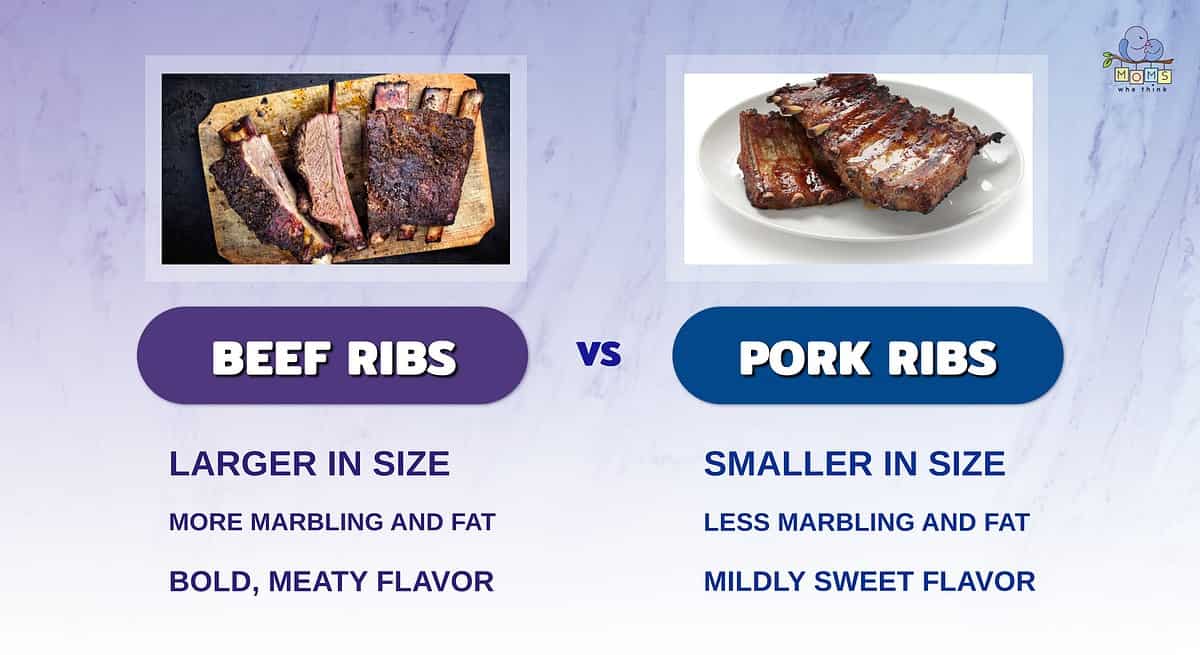
Pork ribs also offer some health benefits, as they contain essential nutrients such as protein, iron, and B vitamins. However, it is important to note that pork ribs can be higher in fat content, including saturated fat. This can contribute to an increased risk of heart disease and obesity if consumed in excess. It is recommended to select leaner cuts of pork ribs and trim off any visible fat before cooking. Moderation is key when enjoying the delicious flavors of pork ribs. (source: )
Serving Suggestions And Pairings
When it comes to serving beef ribs, it is best to let their rich and robust flavors shine on their own. A simple seasoning of salt and pepper can enhance the natural taste of the meat. For those looking to add a little extra kick, a tangy barbecue sauce can be the perfect accompaniment. When it comes to pork ribs, they pair wonderfully with a variety of flavors. Whether you prefer a sweet and smoky barbecue sauce or a spicy dry rub, the options are endless. Pair your pork ribs with classic sides like coleslaw, baked beans, or cornbread for a delicious and satisfying meal.
Recommended Sauces And Seasonings For Beef Ribs
When it comes to serving beef ribs, it is best to let their rich and robust flavors shine on their own. A simple seasoning of salt and pepper can enhance the natural taste of the meat. For those looking to add a little extra kick, a tangy barbecue sauce can be the perfect accompaniment. The smoky and tangy flavors of the sauce complement the beefy flavors of the ribs, creating a mouthwatering combination. Other popular seasonings for beef ribs include garlic powder, onion powder, and paprika, which add depth and complexity to the overall flavor profile.
Ideal Side Dishes And Beverages For Pork Ribs

When serving pork ribs, it’s important to complement their sweet and savory flavors with the right side dishes and beverages. Popular side dishes for pork ribs include cornbread, coleslaw, baked beans, macaroni and cheese, and potato salad. These sides provide a balance of textures and flavors that enhance the overall meal. As for beverages, a cold and refreshing beer or a glass of sweet tea can be the perfect accompaniment to pork ribs, cleansing the palate and adding a touch of indulgence to the dining experience.
Conclusion
In conclusion, the battle between beef and pork ribs ultimately comes down to personal preference. Both cuts offer distinct flavors, textures, and cooking methods that can satisfy any barbecue enthusiast. Consider the nutritional value, cost, availability, and health considerations when making your decision. Whether you choose beef or pork ribs, make sure to pair them with the right seasonings, sauces, side dishes, and beverages for a truly enjoyable dining experience. Ultimately, the choice between beef and pork ribs is a matter of taste and individual preference.
Factors To Consider When Choosing Between Beef And Pork Ribs
When deciding between beef and pork ribs, there are several factors to consider. One important factor is personal preference for flavor and taste. Some people prefer the rich and hearty flavor of beef ribs, while others enjoy the slightly sweeter taste of pork ribs. Additionally, consider the cooking methods and textures that each type of rib offers. Beef ribs are best suited for slow cooking and have a more tender texture, while pork ribs can be cooked using various methods and have a slightly chewier texture. Another consideration is the nutritional content and health benefits of each type of rib. Beef ribs tend to be higher in calories and fat, while pork ribs may contain more cholesterol. Lastly, cost and availability play a role in the decision. Beef ribs are generally more expensive and may be less readily available compared to pork ribs. Overall, it is important to weigh these factors and choose the type of rib that suits your preferences and dietary needs.
Final Thoughts And Recommendations
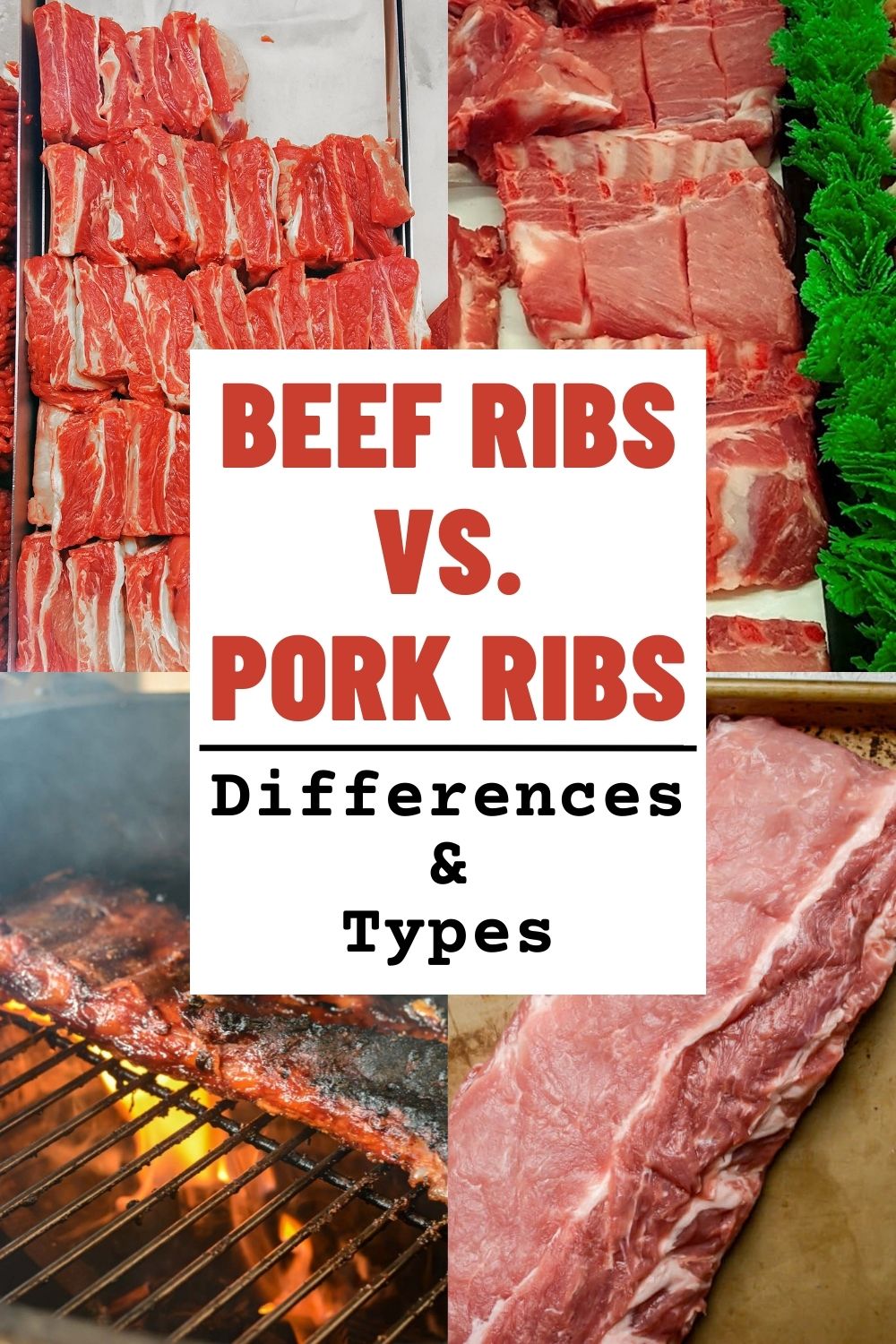
In the battle between beef and pork ribs, the choice ultimately depends on personal preference. Both beef and pork ribs offer unique flavors and textures that can satisfy barbecue enthusiasts. If you prefer a rich and hearty flavor, beef ribs are the way to go. On the other hand, if you enjoy a sweeter taste and tender meat that falls off the bone, pork ribs are the perfect choice. Ultimately, it is important to consider your own taste preferences, cooking methods, and nutritional needs when deciding between beef and pork ribs. So fire up the grill and enjoy a delicious barbecue feast!
FAQ About Beef Vs Pork Ribs: Deciding The Meaty Battle
Q: What is the main difference between beef ribs and pork ribs?
A: The main difference lies in the type of meat they are sourced from. Beef ribs come from cows, while pork ribs come from pigs. This difference also impacts their flavor, texture, and cooking methods.
Q: Which type of ribs is more flavorful?
A: Flavor preference is subjective, but generally, beef ribs are known for their rich and intense flavor, while pork ribs have a slightly sweeter taste. Some people prefer the beefy richness of beef ribs, while others enjoy the tenderness of pork ribs.
Q: Are there any nutritional differences between beef and pork ribs?
A: Yes, there are some nutritional differences. Beef ribs are typically higher in calories and fat content compared to pork ribs. Pork ribs contain more monounsaturated fats, while beef ribs have higher levels of saturated fats.
Q: In terms of tenderness, which type of ribs is easier to cook?
A: Pork ribs are generally considered more forgiving and easier to cook compared to beef ribs. Pork ribs have a higher fat content, which helps keep them moist during cooking, making it easier to achieve a tender result. Beef ribs require more attention to prevent them from becoming tough.
Q: Which type of ribs is more suitable for grilling or smoking?
A: Both beef and pork ribs are excellent choices for grilling or smoking, but they require slightly different approaches. Beef ribs stand up well to long smoking times due to their robust flavor and larger size, while pork ribs cook faster and benefit from shorter smoking periods to retain their tenderness and flavor.

Lenoir’s Bistro & Bakery, a charming and chic cafe, has been delighting patrons with an array of delectable delights since its inception. From mouthwatering breakfast bites to succulent burgers and sandwiches and a tempting selection of pasta, sides, and desserts, Lenoir’s Bistro & Bakery is the go-to destination for food enthusiasts seeking a delightful dining experience. Founded by a passionate culinary team with a vision to create a welcoming and stylish eatery, Lenoir’s Bistro & Bakery has seamlessly blended the art of baking with the craft of preparing savory dishes. The result is a menu that caters to diverse tastes and preferences, offering something to satisfy every craving.